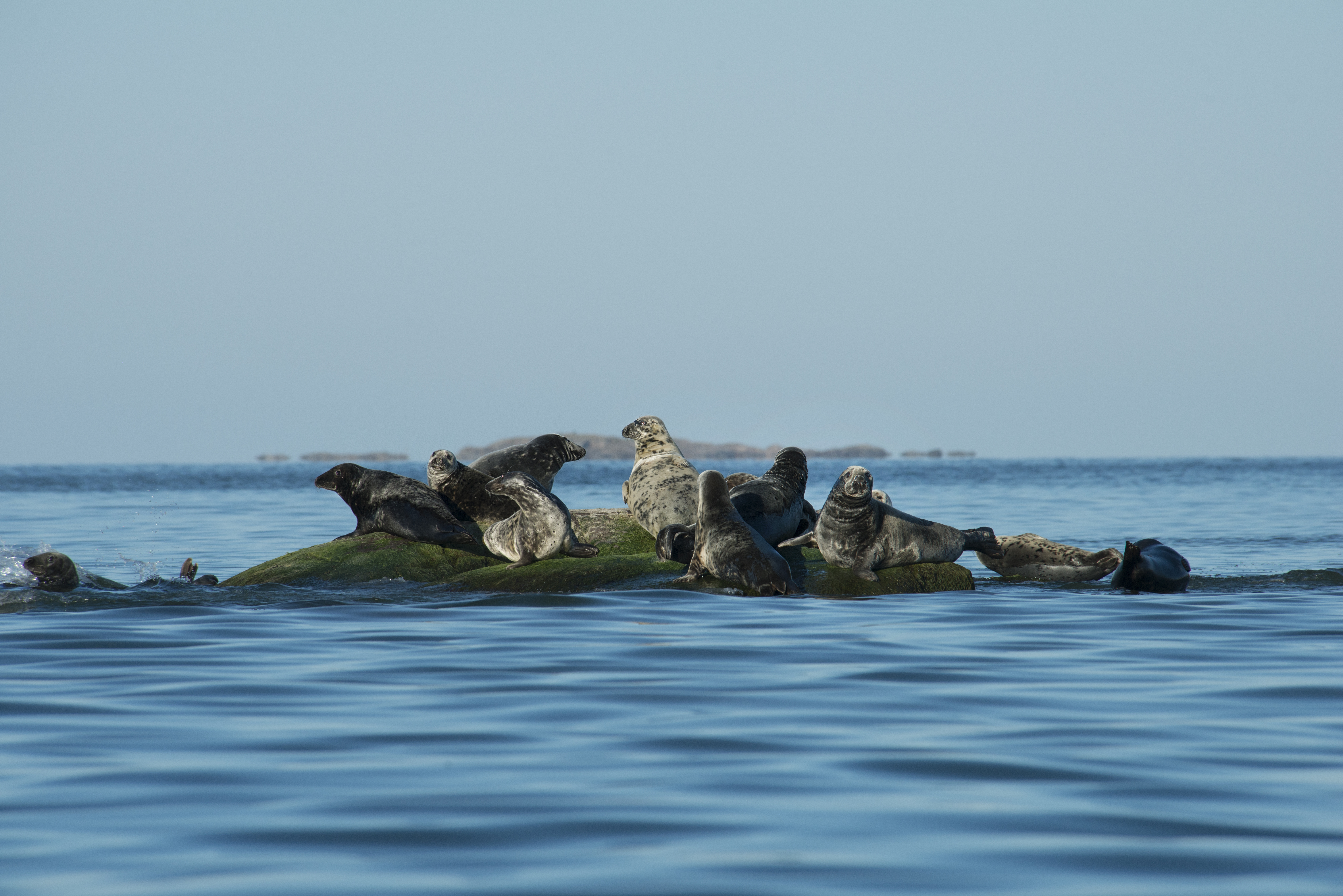
Marine mammals are doing both well and poorly
Three marine mammal species live in Finnish marine areas, i.e. the grey seal, the ringed seal, and the harbour porpoise. Their populations have fluctuated widely over the last century.
The condition of marine mammals has been particularly affected by both hunting and environmental toxins. Hunting collapsed seal populations in the early 20th century. After that, seals began to be plagued by chemicals originating from the forest industry, in particular. These weakened the reproduction of seals so much that the populations continued to decline.
It was not until the 1990s that seal populations began to recover as the concentrations of harmful substances decreased. Despite this, numbers of both grey and the ringed seals remained low until the early 2000s. Environmental toxins may also have affected porpoise populations, although their drowning in fishing nets has been a more significant threat.
The status of marine mammals is monitored by several indicators. The abundance of animal populations, the distribution of species, and the condition of the population are used as indicators of their status.
The status of the grey seal is stable, but the ringed seal is particularly threatened by climate change
Today, more than 30,000 grey seals live in the entire Baltic Sea area. Of these, approximately 13,000 individuals occur in Finnish sea areas, and this population continues to grow moderately. Using all indicators, the condition of the grey seal is assessed as good in Finland.

In the Baltic Sea, the ringed seal population is particularly concentrated in the Bay of Bothnia. This is because the ringed seal is dependent on ice and snow, especially during the breeding season. The latest census result for the Bay of Bothnia counted almost 13,000 ringed seals. The inter-annual variation in these population count results is particularly affected by the ice conditions at the time of the calculation.
Both the Archipelago Sea and the Gulf of Finland have separate ringed seal populations. The number of ringed seals is extremely low in both areas and their populations have not shown any signs of recovery. Climate change threatens the survival of the ringed seal, especially in these more southern areas.
The harbour porpoise is extremely rare in Finnish sea areas
The harbour porpoise is the only whale species found in the Baltic Sea. Until a hundred years ago, porpoises were found in all Finnish sea areas. Today, only a few are detected per year. The porpoise occurs here at the extreme limits of its distribution.
The main reason for the decline of harbour porpoises is considered to be the intensification of fishing; porpoises are drowned in various nets, especially in the southern Baltic Sea.
In the past, i.e. more than a hundred years ago, porpoises were also hunted, which could have caused the decline of the population. Today, harbour porpoises are thought to suffer from, among other things, shipping, as well as underwater noise.

